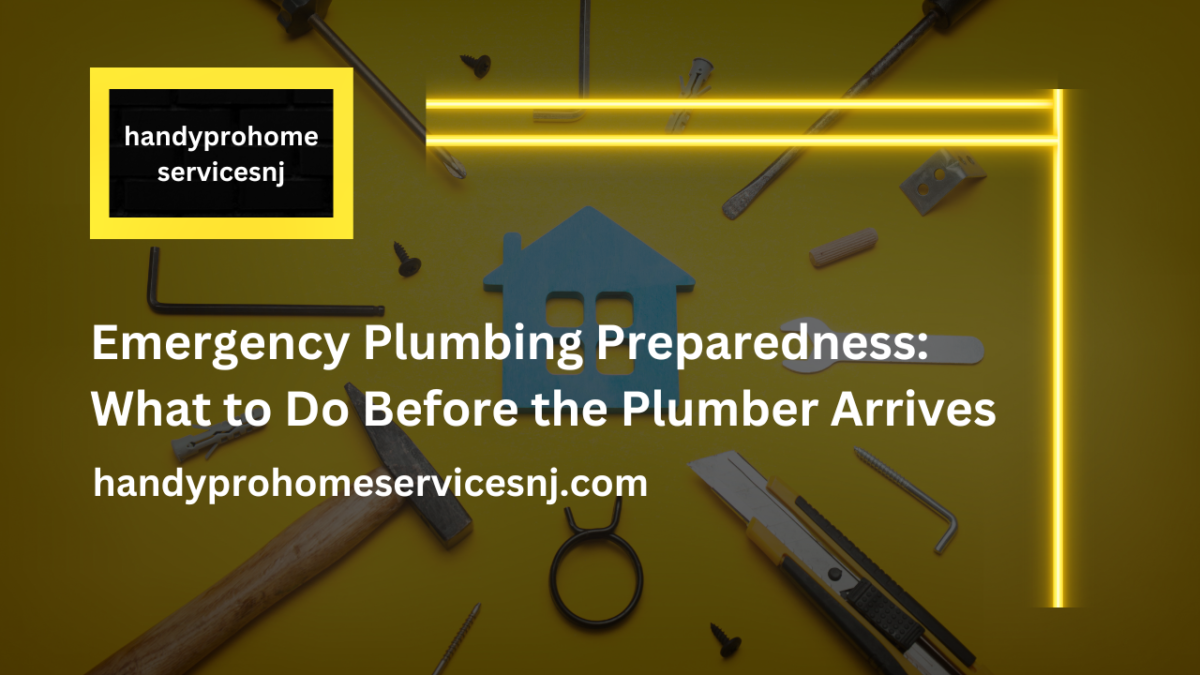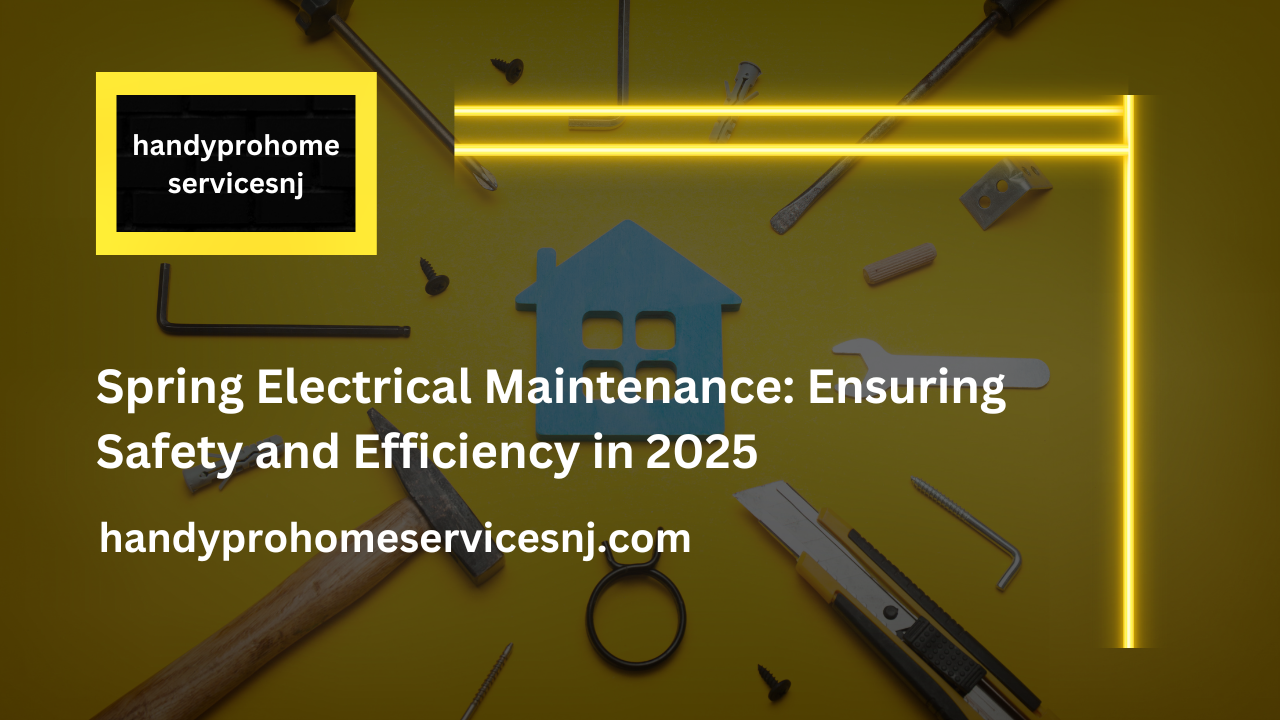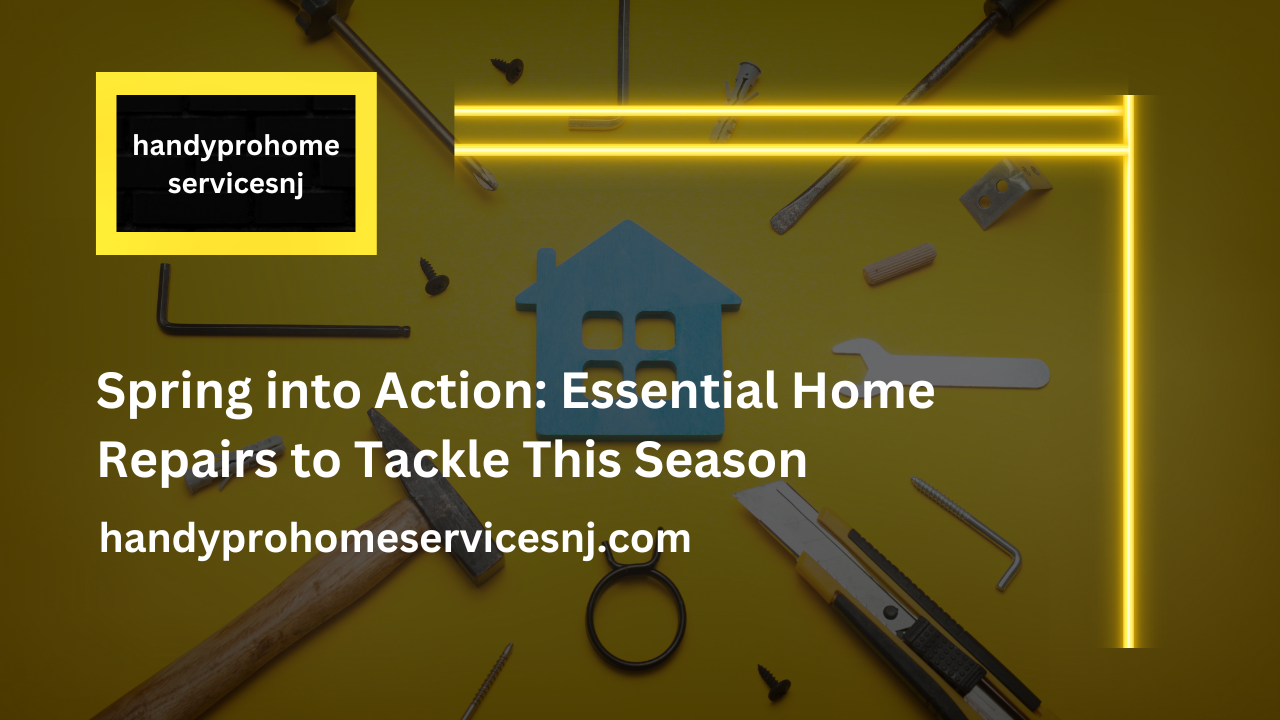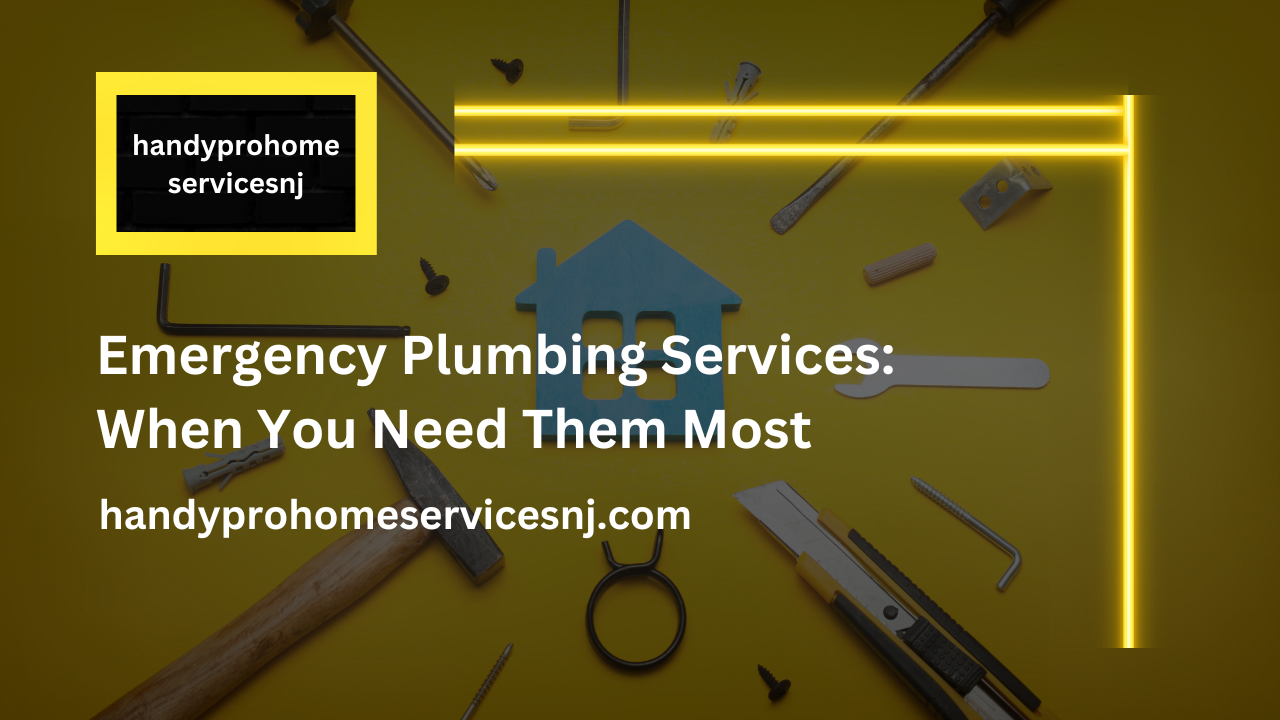Emergency Plumbing Preparedness: What to Do Before the Plumber Arrives

Emergency Plumbing Services: When You Need Them Most
April 9, 2025
Spring into Action: Essential Home Repairs to Tackle This Season
April 30, 2025Key Takeaways
- Fast, well-informed action limits damage and can save you hundreds—sometimes thousands—during plumbing emergencies.
- Creating an emergency plumbing plan and kit equips your household to stay safe and reduce costs before the pros arrive.
- Water conservation and regular maintenance protect your property, your wallet, and your community’s resources.
Ever found yourself ankle deep in water, frantically searching for a towel or the mysterious main shut-off valve—while desperately Googling “emergency plumber near me”? If so, you’re not the only one. Plumbing disasters never strike at a convenient time, and the sudden chaos (and cost!) catches most of us off guard. Here’s a reality check: emergency plumbers charge between $60 and $600 per hour, averaging about $170 (Angi, 2025). That’s a hefty price for stress, panic, and water-soaked floors.
But imagine having a calm, step-by-step plan. Knowing what to do next can mean the difference between an expensive catastrophe and a manageable hiccup. Whether you’re a homeowner, renter, or property manager, emergency plumbing preparedness puts you in control—not just in the moment, but for the future.
Let’s walk through exactly how to protect your home and your budget before the plumber even pulls into the driveway.
What is a Plumbing Emergency? And Why Does It Matter?
So, what exactly counts as a plumbing emergency? It’s more than just a tricky drip or a running toilet. Emergency situations tend to be sudden, severe, and potentially damaging—think burst pipes, uncontrolled leaks, sewer backups, or anything that risks flooding, structural harm, or safety hazards.
Plumbing Emergency Tips:
- Urgent: Major leaking, flooding, sewage backup, no running water.
- Non-urgent (but annoying): Slow drain, minor drips (unless worsening), toilet running.
Why make the distinction? Not every issue demands a midnight call-out and a premium bill. Knowing what’s urgent helps you make smart, timely decisions—and focus on the right pre-plumber steps to minimize trouble.
The Most Common Plumbing Emergencies (and What They Could Cost You)
Plumbing problems don’t just threaten comfort—they can take a real bite out of your finances:
| Emergency Type | Potential Repair Cost |
|---|---|
| Broken/Burst Pipe | $500 – $2,000 |
| Sewer Backup | $500 – $3,800 |
| Overflowing Toilet | $150 – $800 |
| Major Leak | $150 – $1,000 (varies) |
Based on HomeGuide, 2023
Let’s put this in perspective: a burst pipe can damage drywall, flooring, and belongings in minutes. Sewer backups create health and safety risks—and are among the priciest fixes.
Curious about what qualifies as an “emergency” and how to spot red flags? Our Emergency Plumbing Services: When You Need Them Most guide provides even more in-depth scenarios and advice.
Did you know? In 2022, people in Maine searched “emergency plumber near me” more than anywhere else in the US—about 15 times per 100,000 residents (Homestyling Guru, 2022). Clearly, some areas battle leaks and bursts more than others!
Stop the Flood: Immediate Pre-Plumber Steps
Whether water’s on the move or you’re facing an ominous gurgle, swift pre-plumber steps can dramatically reduce damage and hassle.
1. Shut Off the Water Supply
Step-by-step:
- Find the main shut-off valve. This is often in your basement, crawlspace, garage, or near where the main water line enters the house.
- Turn it clockwise to stop water flow.
- For localized problems (sink/toilet), look for small shut-off valves near the fixture.
Pro tip: If you don’t know where your shut-off is, take five minutes ASAP (before disaster strikes!) and locate it. Label it for everyone in the household.
2. Turn Off Electricity (If Safe)
If water is approaching outlets, appliances, or your breaker box, play it safe:
- Don’t wade into standing water near electrical items.
- If possible, shut off electricity in the affected area from your main panel.
3. Contain and Minimize Water Damage
Time is money—literally. The more water spreads, the bigger the repair bill. Here’s how to get ahead:
- Lay down towels, buckets, or tarps.
- Move valuables, electronics, and furniture out of the affected area.
- If the leak is from overhead, use buckets and plastic sheets to catch water.
These early actions keep damage contained and make cleanup more manageable. For step-by-step tips, check out How to Handle a Water Leak in West Long Branch NJ Homes.
Document Damage & Communicate Smartly With Your Plumber
Moving fast is important, but don’t forget: records matter—for insurance claims and to help your plumber help you.
Take Photos and Notes
- Snap clear photos of the damage, affected items, and where the water originates.
- Jot down the time, what you observed, and any steps you’ve already taken.
This proves your attention to the problem if you need to file a claim—and helps your plumber make a faster diagnosis.
Share Key Information
When the plumber calls or arrives, be ready to answer:
- When did the issue start?
- What have you tried so far?
- Is the main water off? Are any areas inaccessible?
The clearer the info, the less time (and money) spent guessing.
Prep the Area for the Pro
Clear clutter. Remove pets to a safe space. Make sure walkways and the work zone are free from trip hazards. This not only streamlines repairs, but creates a safe environment for everyone.
Temporary DIY Fixes: What’s Safe (and What’s Not) Before the Plumber Arrives
So you’ve turned off the water and snapped some photos. Now what? There are a few temporary repairs that can keep things under control:
The Do’s and Don’ts of Quick Fixes
DO:
- Use pipe clamps or “slip” couplings to close small leaks on visible pipes.
- Wrap plumber’s tape (Teflon tape) or emergency epoxy putty around pinhole leaks.
- Place plastic, duct tape, or rubber patches on slow-leaking pipes as a stopgap.
DON’T:
- Attempt heavy-duty repairs (cutting, soldering) unless you’re trained.
- Use caulk, super glue, or random adhesives—these often backfire or contaminate water.
- Ignore leaks in ceilings or electrical zones—always prioritize safety.
Essential Emergency Plumbing Kit (Bullet List)
| Must-Haves for Home Emergency Kit |
|---|
| Adjustable Wrench |
| Plumber’s Tape (Teflon) |
| Pipe Repair Clamp |
| Heavy-Duty Rubber Patches |
| Absorbent Towels |
| Buckets |
| Flashlight & Spare Batteries |
| Protective Gloves |
| Local Emergency Number |
Want a deeper dive on smart repairs? Browse Plumbing Services in West Long Branch NJ for expert insights and service options.
Counting the Cost: Why Preparedness Saves You Money
Plumbing emergencies often hit your budget where it hurts:
- Regular call-out fees: $60 – $600/hr, averaging $170.
- Holiday/emergency upcharges: $225 – $450+ per hour (HomeGuide, 2023).
Did your heart skip a beat? That’s why quick action is key.
How quick action pays off:
- Shutting water off immediately: Reduces the risk of structural/flooring damage, lowering your final bill.
- Containing spread: Fewer rooms affected means less cleanup, less repair, and happier insurance adjusters.
Mitigation isn’t just smart—it’s often required by home insurance to qualify for coverage. If you wait or make the problem worse, claims can get denied or limits reduced. Move fast and document everything.
Prepping for Next Time: Proactive Emergency Plumbing Preparedness
Wouldn’t it be nice to never face a gushing toilet or wild hallway river again? While nothing’s 100% preventable, routine prep keeps surprises to a minimum.
Routine Maintenance = Fewer Surprises
How bad is water waste, really? 10% of households have leaks wasting 90+ gallons a day (SafePlumbing.org, 2022). That’s nearly 33,000 gallons a year, per home.
Preventive steps:
- Schedule annual plumbing inspections (pro tip: add it to your calendar each spring/fall).
- Replace worn washers, corroded pipes, and fix all visible drips early.
- Budget for upgrades (old water heater? rusty pipes?) before an emergency forces your hand.
Check out Home Repair Services in West Long Branch NJ for more on regular home care.
Build a Home Emergency Plumbing Kit
Revisit the kit checklist above. Add a small, waterproof “plumbing emergency” bag under the kitchen sink or laundry room, and teach all adults/kids where it’s located.
Family Action Plan
Everyone should know:
- Where the main shut-off valve is (label it!).
- How to call or text your go-to local plumber.
- Who to contact for insurance.
A few minutes of planning now can save you hours of chaos later.
The Ripple Effect: Water Conservation & Community Impact
How Plumbing Emergencies Drain Resources
Typical US families churn through a staggering 400 gallons of water daily—twice the European norm (SafePlumbing.org, 2022). A single leak, if ignored, can double or triple your baseline use!
Multiply that by millions of households, and plumbing problems become a serious community resource strain—not just your headache.
Why It Matters
Timely repairs:
- Slash your bill.
- Conserve vital water supplies.
- Reduce stress on local infrastructure, especially during drought or peak usage periods.
Being proactive? You’re not just helping yourself—you’re helping your neighbors (and the planet).
When to Call in the Pros—and How to Choose Wisely
Some plumbing situations are flat-out dangerous or too complex for DIY. So, when is it time for a pro?
Red Flags That Require Immediate Professional Help
- Standing water near electrical outlets, appliances, or your breaker box.
- Significant leaks in walls, ceilings, or below major fixtures.
- Sewer smells or visible backup.
- Complexity you simply don’t understand.
Not sure? If your gut says, “This is bad,” you’re probably right. Get an expert’s opinion ASAP.
What to Look For in an Emergency Plumber
- Licensing and insurance: Guards you and your home from further risk.
- Responsive 24/7 service: Emergencies don’t clock out after 5pm.
- Clear estimates and transparent pricing: Know what to expect.
- Local references: Find someone with a proven community track record.
Need a trusted local pro? Visit our Contact Us page anytime to request inspection or urgent service.
Your Emergency Plumbing Preparedness Checklist
Here’s a handy recap for future peace of mind:
| Task | Completed? |
|---|---|
| Locate & label main water shut-off | [ ] |
| Assemble emergency plumbing kit | [ ] |
| Schedule annual plumbing inspection | [ ] |
| Know your go-to emergency plumber’s contact | [ ] |
| Teach household members about emergency plan | [ ] |
Take Action Now: Proactive Plumbing Preparedness Pays Off
Plumbing surprises don’t have to be a nightmare. Having a clear action plan—plus basic tools and key contacts—turns chaos into calm. You’ll save water, cash, and plenty of sweat equity.
Don’t wait for the next drip or flood to test your readiness. Take time today to locate your shut-off valve, assemble a kit, and connect with a trusted local plumber. Need guidance, tips, or immediate help? Reach out via our Contact Us page for fast, friendly advice.
People Also Ask
How do I know if my plumbing issue is an emergency?
If you’re facing flooding, uncontrolled leaks, sewage backup, or anything risking structural harm or safety, it’s an emergency. Slow drains and minor drips can usually wait—but trust your instincts and priorities.
What should I do first in a plumbing emergency?
Start by shutting off the main water supply immediately, then address electrical safety if water is near outlets or appliances. Contain the leak as much as possible and call a professional plumber.
Is it safe to attempt DIY repairs before the plumber arrives?
Temporary fixes like applying pipe clamps or plumber’s tape are usually safe for minor leaks, as long as you avoid risks with gas lines, electrical zones, or heavy-duty repairs.
How can I prevent plumbing emergencies in the future?
Annual maintenance, prompt leak repairs, and an emergency plan greatly reduce your risk. A home emergency kit and informed household go a long way in readiness.
Does home insurance cover plumbing emergencies?
Insurance often covers “sudden and accidental” water damage, but not issues caused by neglect or poor maintenance. Documentation and prompt mitigation are essential for claims.
FAQs:
What should I include in a plumbing emergency kit?
A solid kit should have an adjustable wrench, plumber’s tape, pipe clamp, rubber patches, buckets, absorbent towels, flashlight, gloves, and a list of local emergency contacts. Store it in a spot everyone can access in a hurry.
How often should I inspect my plumbing system?
A professional inspection is wise at least once per year, especially for homes with older pipes or past issues. Regularly check under sinks, around water heaters, and visible pipes for moisture or corrosion.
Are there any signs of a plumbing problem before it becomes an emergency?
Watch for slow drains, sudden drops in water pressure, unexplainable spikes in your water bill, or persistent damp spots. Address these early—they’re often the canary in the coal mine!
Can I turn specific water lines off instead of the whole house?
Yes! Most sinks, toilets, and appliances have dedicated shut-off valves where the water line connects. Turning these off isolates the problem (and keeps the rest of your house running).
How do I find a reputable emergency plumber in my area?
Look for licensed, insured professionals with proven 24/7 service. Word-of-mouth or online reviews from local homeowners are especially valuable. Always ask for credentials and written estimates before they start work.




